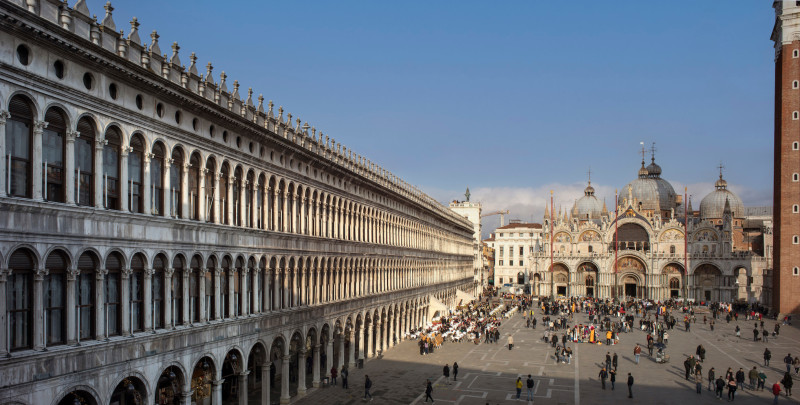
Piazza San Marco
Photo: Alessandra Chemollo
Opening Days and Times
Wed-Mon 10am-7pm from April 20th to October 31st
Wed-Mon 10am-6pm from November 1st to March 31st
*Opening Days and Times subject to change
For information about the exhibition and opening hours: indiana@dh-office.com
Procuratie Vecchie
Piazza San Marco, known in English as Saint Mark's square, is one of the most recognizable squares in the world and the main public square in Venice. There are three connected buildings that surround Piazza San Marco. Two of the buildings, the Procuratie Vecchie (Old Procuracies) and the Procuratie Nuove (New Procuracies), were constructed by the procurators of Saint Mark, the second-highest dignitaries in the government of the Republic of Venice, who were charged with administering the treasury of the Church of Saint Mark as well as the financial affairs of state wards and trust funds established on behalf of religious and charitable institutions. The office of procurator of Saint Mark's square was considered second only to that of the doge in prestige, was one of the few lifetime appointments in the Venetian government.
The Procuratie Vecchie, which is where this exhibition is taking place, was developed along the entire north side of the square in the first half of the sixteenth century under the renovatio urbis programme of Doge Andrea Gritti. The architects Mauro Codussi, Bartolomeo Bon and Jacopo Sansovino all worked on the project, establishing the classically inspired new architectural language adopted by the subsequent developments on the south and west sides of the square.
The Procuratie Vecchie, historical seat of Generali's offices since 1832, was recently restored by architect David Chipperfield - winner of the Pritzker Prize in 2023 - and opened to the public for the first time in 500 years. The third floor houses the Home of The Human Safety Net, a movement of people helping people initiated by Generali and active in 26 countries to support vulnerable families with children aged 0-6 and the professional integration of refugees in their host countries.
INVERT HALF